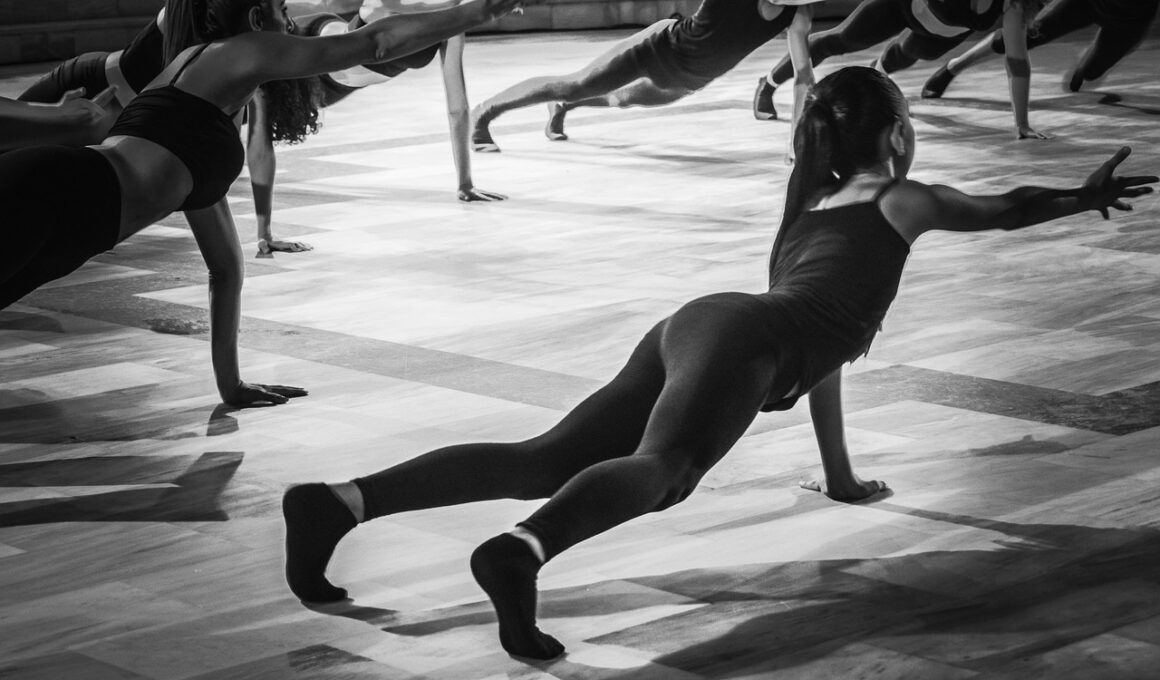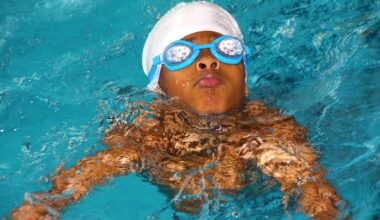How Dance Fitness Equipment Can Help Prevent Injuries
Engaging in dance fitness is an exhilarating way to stay active and healthy; however, it also presents certain risks, especially injuries related to improper technique or unsuitable environments. Utilizing the right dance fitness equipment can significantly minimize these risks and create a safer workout atmosphere. Proper footwear, like dance sneakers, provides the necessary support and flexibility, ensuring your foot remains aligned while executing choreography. Additionally, having a shock-absorbing dance floor is crucial since it lessens impact on joints during high-intensity routines. Together, these elements safeguard against common injuries such as ankle sprains and knee issues. Stretch bands and balance boards are also effective tools to enhance core strength and flexibility, as they assist in warming up your body and building stability. Along with proper equipment, maintaining a customized workout routine suited to individual fitness levels can prevent overexertion. Always integrate warm-up exercises to prepare muscles and joints, which further reduces the chance of injuries during more demanding dance segments. Combining awareness, correct posture, and equipment selection is key to a fulfilling dance fitness experience.
The role of warm-up gear is essential in any dance fitness regime for injury prevention. Using resistance bands or lightweight dumbbells can aid in effective warm-up routines, encouraging blood flow to critical muscle groups. To create a productive environment, outfit your space with mirrors; they help ensure correct posture and aid in self-correction during workouts. A versatile yoga mat is also a staple; it provides essential grip for various floor exercises, along with comfort and support during stretching routines. With a focus on safety, using mats helps in preventing slips or falls on slippery surfaces, reducing injury risks. For those who love greater interaction, dance fitness classes can benefit from a speaker system that enhances energy levels by pumping music necessary for synchronization of movements. Ease of movement should be encouraged through appropriate attire; breathable fabrics that allow quick perspiration evaporation are imperative for comfort. Ultimately, equipping oneself with the correct dance fitness resources not only boosts physical performance but also ensures longevity in your fitness journey. Investing in quality equipment and incorporating them empathetically into workouts leads to substantial prevention of possible injuries.
Choosing the Right Footwear
Selecting the appropriate footwear can dramatically impact performance in any fitness routine. In dance fitness, shoes tailored specifically for dancing, resistance training, or aerobic workouts are crucial. Dance shoes, often made from flexible materials, help enhance your movements while providing the necessary support to prevent foot injuries. These shoes generally feature cushioned soles designed to absorb shock and reduce strain on your feet and legs. Additionally, they support freedom of movement while accommodating your body’s rhythm, allowing for unrestricted performance. An important aspect of footwear is fit; shoes must fit snugly without being excessively tight. The wrong fit could lead to blisters or other foot problems. Also, the sole type plays a crucial role; choose shoes with soles made for the dance surface where you’ll be performing. If you frequently engage in dance fitness classes, it’s wise to have multiple shoes for different dance styles and floor types. Finally, don’t underestimate the importance of replacing worn-out shoes; old footwear leads to less support and increased injury risks, making consistent evaluation necessary for a successful dancing experience.
Warming up before starting any physical activity is an essential practice aimed at avoiding injuries. A specifically designed warm-up routine prepares your body for intense movements, enhancing circulation and loosening tight muscles. This routine can consist of stretches targeting the legs, arms, back, and core. Stretching helps in increasing flexibility and range of motion, which are vital for performance in dance. Additionally, incorporating light cardiovascular exercises like jogging or jumping jacks gradually elevates heart rates, transitioning from resting to engaging levels. Furthermore, utilizing foam rollers in your warm-up can alleviate muscle tension and improve blood flow. Just as crucial as warming up is the cool-down process that should not be neglected. Light stretching and relaxation exercises after your workout help in preventing tightness and soreness, thereby promoting recovery. Integrating both warm-up and cool-down phases can lead to improved performance and less pain the following day. Overall, understanding the importance of these practices ensures your body is ready for the dance fitness adventures ahead, equating to reduced risks of experiencing stress or undue pain in your muscles and joints.
Utilizing Technology for Safety
In today’s digital age, technology plays a significant role in enhancing the safety of fitness routines, including dance workouts. Many dance fitness enthusiasts now leverage wearable tech like fitness trackers that monitor heart rates and calories burned for real-time feedback. These devices provide essential insights, allowing individuals to avoid overexertion. Several apps specifically designed for dance offer guidelines on proper technique and helpful tutorials for beginners looking to avoid injuries. The content often includes modifications suited for varying skill levels, ensuring everyone safely participates. Engaging in virtual dance classes allows participants to observe instructors’ techniques up close; this enhances understanding, thereby facilitating safer practices. Moreover, social platforms often play a role in fostering a community; sharing experiences and injury prevention tips among fellow dancers leads to collective learning and support, guiding others away from common pitfalls. Furthermore, leveraging video analysis tools can break down movements to identify areas needing improvement. Investing time in understanding how to use these tools effectively contributes to safer, more enjoyable dance fitness experiences, reducing injury incidents.
The curriculum for dance fitness classes often offers vital information to bolster awareness around injury prevention. Qualified instructors specializing in dance fitness practice can provide tailored guidance on safe, effective movement. They emphasize the importance of listening to one’s body and being mindful of any discomfort that could indicate the onset of injury. Many instructors will advocate for breaks to prevent overuse of muscles and joints, teaching the principles of pacing oneself within a routine. Classes often incorporate low-impact alternatives for more advanced movements, ensuring everyone can participate. This inclusivity allows individuals at different fitness levels to avoid pushing themselves beyond their limits. Furthermore, community-based classes foster a supportive environment encouraging participants to share concerns. This open dialogue greatly reduces the stigma surrounding asking for help or guidance during workouts. Additionally, building community around dance promotes motivation to maintain active participation, keeping injury risks low while engaging individuals at all skill levels together. Consistent attendance in such environments cultivates camaraderie and distraction from potential discomfort, ultimately making dance fitness safer and more enjoyable.
The Importance of Proper Recovery
Recovery practices are fundamental in any rigorous dance fitness program to ensure participants remain injury-free. Taking the time to foster recovery can be as crucial as the workouts themselves; it helps restore energy and alleviate muscle fatigue. Emphasizing the significance of post-workout recovery activities such as hydration, nutrition, and stretching can greatly prevent future injuries. Close attention should be paid to proper hydration before, during, and after workouts as it directly relates to muscular function and injury prevention. Moreover, nutrition plays a crucial role; a well-balanced diet rich in proteins, healthy fats, and carbohydrates gives the body essential nutrients needed for recovery after intense dance sessions. Additionally, restorative activities like yoga or gentle stretching can greatly enhance flexibility, thereby aiding recovery even further. Consider using massage therapy periodically to reduce the buildup of lactic acid and promote blood circulation, which accelerates recovery. Ultimately, prioritizing recovery ensures participants can consistently engage in dance fitness, while also minimizing injury risks. With a holistic approach, injuries become infrequent, allowing for more consistent participation and enjoyment.


